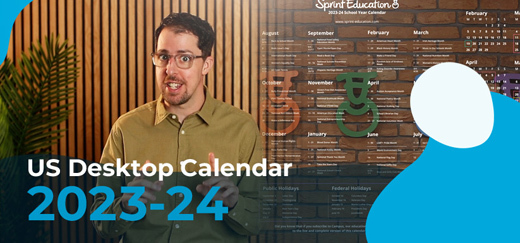7 Steps to Improve your Email Deliverability
7 Steps to Improve your Email Deliverability
Instantly improve your emails’ deliverability rates, resulting in higher open and click rates, and, of course, more sales, with these 7 easy tips.
Instantly improve your emails’ deliverability rates, resulting in higher open and click rates, and, of course, more sales, with these 7 easy tips.
Your education marketing emails are a critical component of your digital communication, and ensuring that your emails get delivered to teachers’ inboxes is crucial. But as spam emails and phishing attempts become increasingly cleverer, so do email filters. Email providers have become increasingly stringent about filtering emails, which can often cause legitimate emails to end up in teachers’ spam folders.
Your emails are constantly fighting an uphill battle, but it’s not as difficult – nor scary - as it sounds to win the war against spam filters.
With just a few easy-to-implement tricks, you can instantly improve your emails’ deliverability rates, resulting in higher open and click rates, and, of course, more sales.
1. Maintain a clean email list
One of the main, and obvious, causes for your email to end up in a teacher’s spam folder is because they’ve already marked your emails as spam in the past. But did you know that some providers will start diverting your emails to the spam inbox simply because the recipient has chosen not to open your last few emails?
It’s essential you maintain a clean, up-to-date mailing list by regularly removing inactive or invalid email addresses to prevent both of these scenarios.
When sending outreach emails to schools, you’ll most likely rely on Legitimate Interest under the GDPR. But you can also expand your own database by using opt-in forms and double opt-in processes, or by obtaining explicit consent. A useful method of gaining permission to email teachers is through gated content. Lock a useful, substantial guide full of classroom strategies, or a free bumper resource pack behind a form, and ask for opt-in permissions in return for their free download.
By using Sprint Education’s data, either through our SAAS Campus or our managed strategies, you won’t need to worry about bad or old data. Our in-house data team make, on average, 80,000 updates to our renowned databases every month, to make sure your campaigns reach the right audience, and have the highest deliverability standards possible. Read more about our education data here: https://sprint-education.co.uk/product/education-data.
“Data protection and GDPR compliance is at the heart of what we do. Our education data is built upon GDPR-compliant opt-in consent from teachers within large portions of our database, which we have achieved through our education ecosystem - Teacher Perks, with the rest of our data being processed under legitimate interest." Guy - Co-Founder
2. Use reputable email service provider server.
Email service providers have their own reputation score, determined by several factors, including the number of emails that get marked as spam, and the quality of the send lists that go through the system. By using a reputable email service provider, you can increase your chances of having your emails successfully delivered to teachers’ inboxes. Additionally, many ESPs offer features like spam filtering and email deliverability monitoring that can help you stay on top of your email deliverability.
Unfortunately, these scores aren’t just based on your emails – they’re based on the potentially millions of other emails from other customers also using the service provider. With most providers, you’re sharing sending servers, which causes a whole list of issues including security risks, resource limitations, compatibility issues, reduced privacy – and poorer deliverability rates.
If other customers sharing your sending servers have also had their emails marked as spam – whether because they were spam emails, or legitimate emails that have fallen foul of these steps – then yours will unfortunately be tarred with the same brush as soon as your email leaves the server.
It’s important to do your research and make sure you choose a reputable provider.
Did you know that we’re the only education agency to own, host, and manage our servers/Ips in-house?
This means we are in complete control of our clients' email paths which ensures a much better deliverability rate.
Put briefly, when we broadcast an email for a client to schools, the emails go through our system and servers direct to the school filter systems. This direct route is best email marketing practice, and from a filter system's perspective looks ‘trustworthy’; the result being more emails get through to the desired recipients.
Other agencies that rent their servers from external third party organisations send your emails from their system direct to the third party servers, before then redirecting the emails on towards the schools. Many school filter systems will recognise this indirect path as suspicious/spam and ultimately block more of your emails from ever reaching the teachers.
We invest over £750k every year in the continual development and management of our technical infrastructure to ensure our clients get the best results possible.
3. Avoid using “spammy” language
Email providers use filters to identify and flag emails that contain language that is commonly associated with spam. Nowadays, they don’t just scan text, either – filters now have the capability to detect text embedded into an image.
There is a huge list of dos and don’ts, but the main culprits you need to avoid include using all-caps and excessive exclamation marks, and making bold promises such as ‘earn £1,000 today!’. You should also be mindful of common trigger words, such as ‘free’, ‘win’, or ‘money’. On their own, these won’t cause your email to be immediately re-directed to the spam folder. But if you’re already on thin ground, including the line ‘Win FREE school prizes today!’, even halfway down your email, can easily send your email over the edge.
On a similar note, it’s important to make sure your email accurately reflects the content of the email. A common spam trick is to use a ‘clickbait’-style subject line to increase their open rate,
4. Keep your emails short and to the point
Long emails are often associated with spam, and are more likely to be flagged by filters.
The length of an email can impact its deliverability, as certain email clients and servers have size limits for incoming emails. If an email is too long, it may be truncated or rejected by the recipient's email server, leading to a poor user experience. Additionally, long emails can be seen as spammy, as they often contain excessive amounts of text and images.
To avoid this, keep your emails short and snappy. This will work in teachers’ favours, anyway; as some of the busiest and most emailed professionals, they only spend 11 seconds on average reading an email, which translates to roughly 50 words. Of course, some emails in your strategy will naturally need to be longer, but we recommend no more than 300 words per email at Sprint, as this gives teachers enough information to decide whether they’ll continue reading and learning more about you after those 11 seconds, but not enough to overwhelm them into immediately deleting your email.
We also recommend a text-to-image ratio of 60:40, to avoid too many images flagging spam filters.
5. Make sure your emails are properly formatted
Emails that are not properly formatted can cause problems with deliverability. This includes ensuring you use a standard font, size, and spacing; not using too many colour values; and avoiding long hyperlinks.
Additionally, avoid using HTML that’s complex or messy, or includes scripts that may not render correctly in all email clients, as this can reduce the chances of your emails making it to teachers’ inboxes. Another element of your email’s formatting that you may not immediately associate with deliverability is alt text. Alt text is the plain text you place against an image for the benefit of screen readers, and those who have images turned off. For this reason, it’s important for accessibility, but the improper use of alt text can result in poor deliverability rates.
It’s a common spam trick to hide unfavourable language or links in alt text, but nowadays, spam filters read alt text – and all elements of your HTML. Even adding too many words in the alt text tag can flag the filters, even if all of those words are genuine. Therefore, alt text should only be used to replicate any wording embedded in the image, and not simply to describe the contents of the image or photograph.
You’ll need to keep in mind the accessibility and readability of your email on both desktop and mobile devices, as well as in dark mode, as all of these can impact on the user experience, and therefore the deliverability of your email.
6. Make use of authentication protocols
Authentication protocols, such as SPF, DKIM, and DMARC, help email providers verify that an email is coming from the domain it claims to be coming from. By properly configuring these protocols, or using an email marketing agency that has this covered, you can help ensure that your emails are delivered to teachers’ inboxes.
7. Monitor your deliverability
To ensure that your emails are being delivered successfully, it is important to regularly monitor your email deliverability. This can be done by using tools like Google Postmaster Tools or by setting up tracking in your email service provider. These tools will help you see if your emails are being delivered, if they are being marked as spam, and if there are any other deliverability issues that need to be addressed.
Ensuring your education marketing emails’ deliverability rates are as high as possible is critical to the success of your selling-to-schools’ strategy. By following our quick tips, and regularly monitoring your deliverability rates, you can help ensure your emails are reaching your audience.
Alternatively, let Sprint Education manage your email marketing campaigns for you. Arrange a call with one of our Education Strategists, and find out more about how our processes ensure you the highest deliverability rates possible for your education marketing communications. Or, ask us about Campus, which gives you full control over your emails while relying on our accurate data and stringent cleansing processes. You can also contact us any time on info@sprint-education.co.uk, or 01684 297374.
Tags
Email
Email Marketing
Similar Articles


VIDEO: Selling to Schools Insights - Chapter 2 - Communicating with Schools
We analyse chapter 2 of The State of Selling to Schools 2023, discover how emails compare to social media and postal marketing, how often each is viewed and what leads to the most positive teacher responses.


The Beginner’s Guide to International Schools Marketing
Understand and sell to the types of education establishments across the globe.


Expert marketing to K-12 support and solutions
Expert marketing to K-12 solutions
Email Principals, Teachers, and District Staff Inboxes
Email teachers and staff inboxes
Sell More to US and Global Schools and Districts
Sell more to schools and districts
































